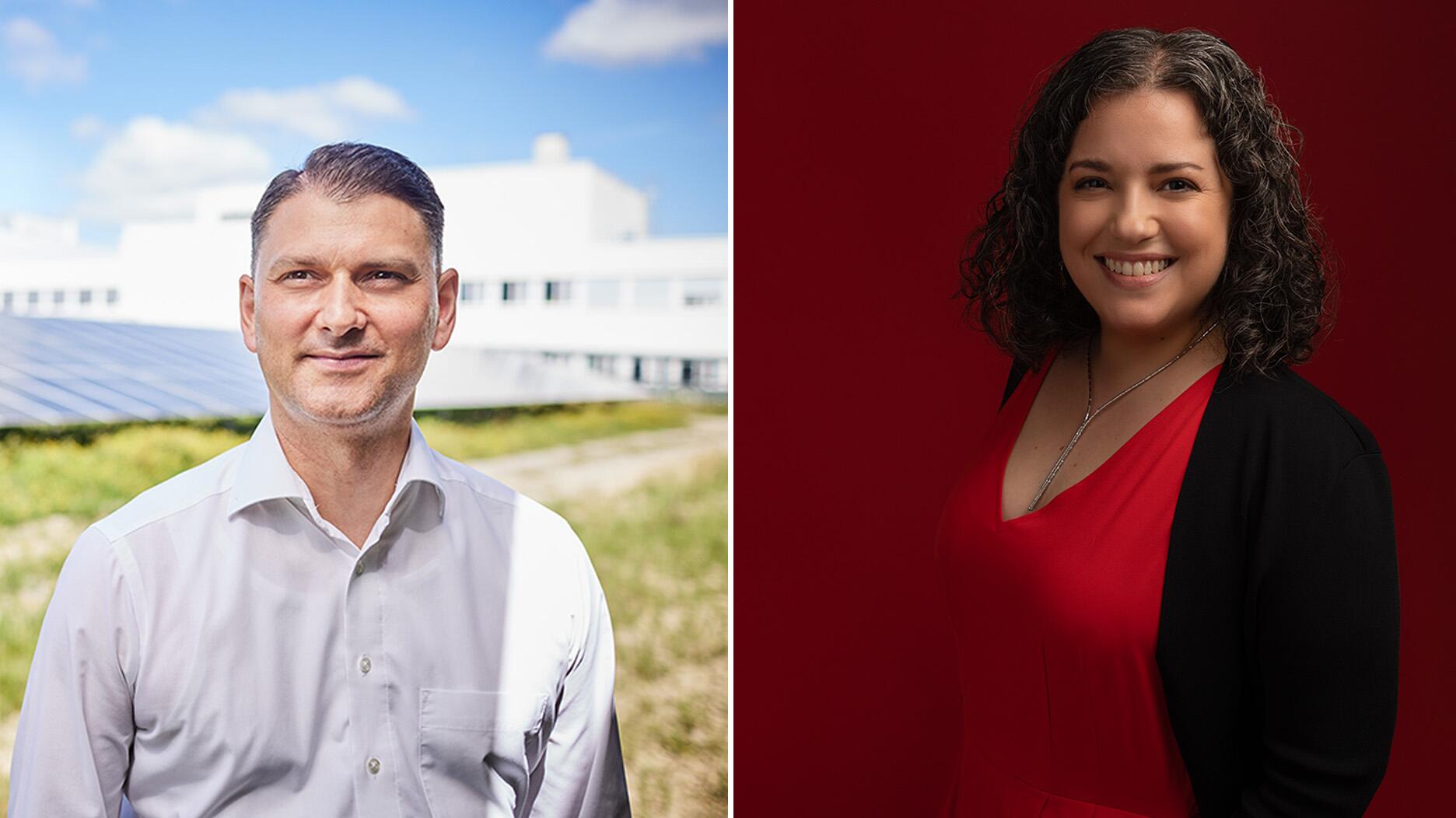The couple pleaded guilty to concealing at least $127 million in cash transactions at its precious metals businesses.
How Tariffs Will Impact The Jewelry Industry
Diamonds, pearls, precious stones, silver jewelry and more will be subject to tariffs as of Sept.1.

New York—President Donald Trump announced last week that the United States would impose a 10 percent tariff on an additional $300 billion worth of Chinese imports next month, the latest move in an escalating trade war.
The president reportedly overruled his advisors, who warned that another round of tariffs could be detrimental to the U.S. economy and weigh on already strained relations with China, as per The Wall Street Journal.
Trump countered that a strong economy would give the U.S. the advantage if the trade war continues.
In response, China’s Ministry of Commerce confirmed reports that Chinese companies have stopped buying U.S. agricultural products in response to the added tariffs and said it “has not ruled out” import tariffs on agricultural products purchased after Aug. 3, CNBC reported.
The Dow dropped as much as 900 points in afternoon trading Monday following the news, the worst drop of 2019 to date.
The soon-to-be implemented 10 percent tariff is in addition to the 25 percent tariff levied on $250 billion worth of Chinese goods previously imposed.
Consumer products, like smartphones and clothing, were spared by the previous tariffs, but won’t be exempt this time around.
Diamonds, pearls, precious stones, synthetic precious stones and silver jewelry also have been added to the list of products subject to tariffs.
“The misconception is that China or Mexico will pay. That’s not the case,” said Sergio Rojas, CEO of Dominion Jewelers in Falls Church, Virginia, and a National Retail Federation board member. “A combination of the retailer, wholesaler and end customer will pay, and that’s really the message that the NRF is trying to get across.”
The U.S. government collected $63 billion in tariffs over the last 12 months as of June 30, according to data from the U.S. Treasury.
As an NRF member, Rojas said he brings to the organization the perspective of an independent retailer and speaks about how different legislation can affect the jewelry industry.
The tariffs will affect the bottom line of people buying wholesale, he said, noting he has seen wholesale prices increase between 18 and 22 percent.
Rojas said that while his store doesn’t import diamonds and jewelry directly from China, he works with vendors that do.
“My concern was once they start to be affected adversely, we would feel it on our end. As a retailer, it was put on my radar,” he said.
Rojas
The group got signatures from 661 companies, including major jewelry sellers like Macy’s, Walmart, JC Penney and Costco, as well as retail organizations.
The Precious Metals Association of North America (PMANA) also signed the letter, warning Trade Ambassador Robert Lighthizer that a tariff on metal imports would “backfire” on the industry.
Some companies chose to submit letters of their own as well.
Grace Stockley, president of PMANA, noted in her letter that while the organization agreed that China should be held accountable for “unfair” trade practices, the tariffs would have “a negative impact on our domestic operations, and open the door for damaging retaliatory action.”
Timothy D. Matthews, CEO of JTV, described the country as “a vital source for our industry” in his letter, although he noted there are some “bad actors.”
“Chinese jewelry and raw material suppliers have been valued and necessary partners in developing a robust and growing U.S. jewelry industry,” he wrote.
He noted that JTV is dependent upon foreign sources for its raw materials and manufacturing, stating that the company buys an average of $190 million worth of product from vendors outside of the U.S.
Around 46 percent of JTV’s product, or $87 million per year, is sourced from China.
JTV’s average item price is less than $100, which Matthews said would not be possible without its supply chain partners in China.
Prime Art and Jewel, a Dallas-based manufacturer, also pointed to Chinese manufacturing as the reason it’s able to keep its prices low.
The company noted in its letter that it chose to establish its manufacturing facility in China, not only for its affordability, but because the country’s jewelry manufacturing methods and supply chain management capabilities are the “most advanced.”
“Setting up operations in the United States is not an option for PAJ,” wrote Joe Meli, vice president of marketing and brand development. “Even if U.S. manufacturing capacity were built up over many years, manufacturing costs would be three times current costs, rendering jewelry unaffordable for working-class Americans.”
Karen Giberson, CEO of the Accessories Council, a not-for-profit trade organization, wrote in her letter that there are no U.S.-based manufacturing alternatives for the products made by her organization’s members, which range from sellers of fashion jewelry and sunglasses to scarves and footwear.
She said that even if alternative manufacturing sources were available, it would take between 9 and 18 months to certify and approve new suppliers.
Giberson also noted that the U.S. retail industry for accessories is already under stress, from the closing of retail stores to the pending increase of tariffs from the European Union.
“How much more can one small industry take? There is no doubt that additional tariff on these goods would result in further contraction,” she wrote.
The trade war has been on the radars of larger companies and retail organizations for a while, but Tariffs Hurt the Heartland organized town halls to educate smaller retailers about the potential impact of tariffs.
“At the outset, it was an education effort,” said group spokesman Matt McAlvanah. “We’re no longer in that phase.”
He noted that although the intricacies of tariffs and economic policy can be confusing, the effects becomes clearer when consumer goods are impacted.
The anecdotes McAlvanah heard from retailers during the town halls, from rising costs to supply chain issues, match up with economists’ data.
“We hear a lot about the delay or cancellation of projects that are potentially job-creating or would expand their business,” he said.
The main concern of the retailers he spoke with was general uncertainty.
Business owners can’t plan when they don’t know whether or not their prices will be significantly increased, said McAlvanah.
A price increase may not be able to be absorbed without passing the cost onto the consumer.
It comes down to whether or not the supply chain is impacted, he said, and if a business can absorb that cost increase in the supply chain.
He noted that business can’t adjust a supply chain overnight, particularly if there’s a long-standing relationship with a supply chain partner.
Tariffs Hurt the Heartland’s website features a tracker that measures the cost of the trade war based on monthly tariffs on imports; it had reached about $30.52 billion as of Thursday morning.
The group estimated that the trade war costs Americans $810 per second.
The number does not take into consideration the cost of retaliatory tariffs or the cost of programs helping the farmers who have suffered losses.
“The administration is doubling down on a failing strategy. Nobody wins in a trade war, and raising tariffs further on American businesses and consumers will only result in slower economic growth, more farm bankruptcies, fewer jobs and higher prices,” the group said in a statement.
The latest round of tariffs is set to go into effect Sept. 1.
The Latest

Consumers shared concerns about prices, inflation, tariffs, trade, and politics in the survey’s write-in response section.

In February 2026, the auction house will move its headquarters to the former Steinway Hall, a neoclassical landmark on Billionaires’ Row.

How Jewelers of America’s 20 Under 40 are leading to ensure a brighter future for the jewelry industry.

The new show will take place Jan. 23-25, 2026.


The former BHP Billiton leader and Gemfields chairman is remembered for his influential leadership throughout his 50-year mining career.

The LVMH-owned brand has partnered with the costume design union to revamp its award for 2026.

Roseco’s 704-page catalog showcases new lab-grown diamonds, findings, tools & more—available in print or interactive digital editions.

The luxury titan inked a deal to acquire an initial minority stake in the jewelry manufacturer with a pathway to full ownership by 2032.

The company’s curation of unsigned vintage and estate jewelry debuted at the Bloomingdale’s in Costa Mesa, California.

In the recent multi-shipment seizure, CBP also found counterfeit Audemars Piguet, Moncler, and Chrome Hearts items.

Helzberg’s Chief Retail Officer Mitch Maggart shared details about its tests of a new store concept rooted in an elevated luxury experience.

Jewelers of America execs and National Jeweler editors discuss tariffs, the sky-high gold price, and the engagement that broke the internet.

The luxury goods company said founder Ippolita Rostagno will remain at the brand’s helm.

Laura Burdese, who joined the Italian luxury brand in 2022, will take on the role in July.

The National Jeweler editors revisit the most noteworthy industry happenings and design trends from 2025.

Need a gift for the cat lover who has everything? Look no further than our latest Piece of the Week.

It purchased the “Grosse Pièce,” an ultra-complicated Audemars Piguet pocket watch from the ‘20s, for a record-breaking price at Sotheby’s.

The lab-grown diamond grower now offers custom engagement and fashion jewelry through its Kira Custom Lab Jewelry service.

Chandler got his start at Michelson Jewelers and has served as DCA president and CEO since 2001. He will retire at the end of the month.

The boutique is slated to open this week inside Terminal 8, offering pre-owned Rolex watches and more to international travelers.

Sponsored by Digital Monitoring Products

The special-edition egg pendant ingested in a New Zealand jewelry store was recovered after a six-day wait.

Associate Editor Natalie Francisco plays favorites with Piece of the Week, selecting a standout piece of jewelry from each month of 2025.

The “Love and Desire” campaign is inspired by the magic that follows when one’s heart leads the way, said the brand.

Two awardees will receive free tuition for an educational course at the Swiss lab, with flights and lodging included.

Berta de Pablos-Barbier will replace Alexander Lacik at the start of January, two months earlier than expected.


























